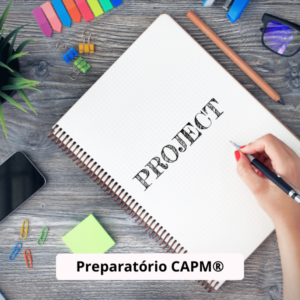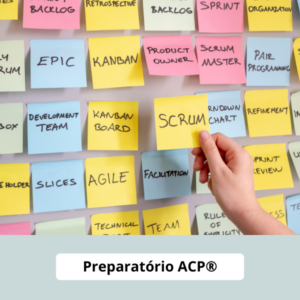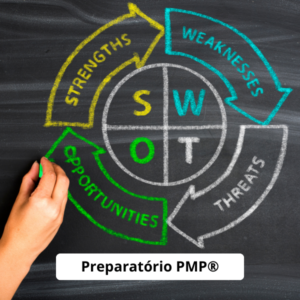Introduction
Managing projects effectively goes far beyond simply meeting deadlines, budgets, and scopes. The true success of a project lies in its ability to generate real and lasting value for stakeholders and society. In a series of blogs, we’ve explored how to define success in projects, control it, measure it, and deliver value through project success. In this blog, we’ll provide an overview of the main ideas discussed in each blog, with links to dive deeper into specific topics.
1. Defining Success in Project Management: A New Perspective
Project success cannot be limited to the three traditional constraints (time, cost, and scope). The value delivered to stakeholders should be the primary criterion for success. This means a project is successful when it generates positive long-term impact and is perceived as valuable by those involved. Want to learn more about how to redefine project success? Read Blog 1.
2. How to Measure Project Success.
The Net Project Success Score (NPSS) is an effective tool for measuring project success, as it assesses not only execution but the perceived value delivered. Interested in learning how to calculate and use the NPSS? Check out Blog 2.
3. Factors Influencing Project Success
The success of a project depends on several factors, including strategic alignment, stakeholder management, risk management, and sustainability. Managing these factors proactively can ensure that the project not only meets its goals but also creates lasting value. Want to know how to manage these key factors? Read Blog 3.
4. The Role of Project Professionals in Maximizing Success
Project professionals play a crucial role in maximizing project success. They are responsible for not just technical delivery, but also creating real value. Continuous training and strategic leadership are essential to ensure success. Learn more about how project professionals maximize success in projects. Check out Blog 4.
5. Aiming for a Higher Purpose in Project Management
Projects with a greater purpose, such as social and environmental impact, generate higher stakeholder engagement and lead to long-lasting success. Want to learn how to align your projects with a greater purpose? Read Blog 5.
6. Measuring Success by Sector and Project Type
Project success can vary significantly depending on the sector and project type. The NPSS is a useful tool for assessing success in different contexts, considering the specifics of each sector and project type. Interested in learning how to measure success by sector and project type? Check out Blog 6.
7. Creating a Culture of Continuous Learning
Continuous learning is crucial for long-term success in project management. Incorporating lessons learned, being flexible in the face of changes, and creating an environment that fosters growth are key to improving processes and results. Want to know how to implement a continuous learning culture in project management? Check out Blog 7.
8. The Future of Project Management: Trends and Innovations
The future of project management is being shaped by innovations like AI, automation, remote collaboration, and sustainability. These trends are transforming how projects are executed and managed, offering new opportunities to maximize success and improve outcomes. Want to learn more about the innovations shaping the future of project management? Read Blog 8.
Below you will find grouped recommendations for project professionals and executives, including a complete list of Performance Themes and Performance Levers.
Table of Recommendations
| Recommendation | For Project Professionals | For Executives |
| Continuous Learning in Project Management | It’s important to document and share lessons learned throughout the project lifecycle, using this information to improve future project execution. | They must implement systems and processes that facilitate the capture and application of lessons learned, creating a cycle of continuous improvement that involves all members of the organization. |
| How a Higher Purpose Can Drive Project Success | They should focus on clearly communicating the higher purpose of their projects, ensuring all involved parties understand how the project can bring sustainable benefits to society or the environment. | They should promote and support projects with social impact, encouraging their professionals to aim for higher goals that serve both organizational interests and societal well-being. |
| Key Factors Influencing Project Success | It’s essential to clearly understand how the project fits into the broader organizational strategy and ensure that all stakeholders have a shared vision of how the project contributes to larger goals. | They need to ensure that all projects are aligned with the company’s strategy, prioritizing those that will provide the greatest strategic value. |
| Measuring Project Success | The NPSS allows them to measure the real impact of a project, considering value delivered, and make adjustments in execution if the perception of success is lower than expected. | They can use the NPSS to identify areas for improvement and better align stakeholder expectations, ensuring that the project delivers real value for the organization and society. |
| Measuring Project Success by Sector and Project Type | The NPSS allows them to measure real success beyond just execution, considering the perceived value that stakeholders attribute to the project. | The NPSS provides a flexible way to assess success across various sectors, helping them make better decisions about project management strategies and priorities. |
| Project Professionals: How to Maximize Success and Create Lasting Value | They should position themselves as strategic leaders, ensuring that the project creates real value for the organization and stakeholders, and contributes to broader goals. | They need to empower project professionals to take on broader responsibilities, providing them with the skills and authority to lead strategically and create value throughout the project. |
| The Future of Project Management: Trends and Innovations | They must be ready to adopt new technologies to optimize their management approaches, using AI to predict risks and automation to streamline repetitive tasks. | They need to ensure that technology is integrated into their project management systems, investing in tools that increase productivity and accuracy in project execution. |
Table of Performance Themes
Performance Themes are general measurement categories useful for defining what success looks like and setting up a measurement system for a specific project.
- A more important outcome than other choices we could have made at the time
- A valuable/useful outcome
- Alignment with strategic objectives
- Customer satisfaction
- Employee experience
- Generating revenue
- Intended benefits
- Level of quality
- Long-term value aligned with organizational strategy
- Market share gains/competitive impact
- Met defined requirements
- On budget
- On time
- Operational efficiency and productivity (e.g., cost savings)
- Organizational risk mitigation
- Product/service that is demonstrably better than what it replaced
- Return on investment (ROI)
- Safety
- Stakeholder satisfaction
- Sustainability and social impact
- The ability to create new quantified value for the organization
- Within scope
Table of Performance Levers
Performance Levers are activities to be carried out, capabilities to be prioritized, or conditions to be fostered that can improve the chances of project success.
- A shared strategic vision of the project
- Adequate funding of the project to completion
- Agility/flexibility in the approach to the project
- Caring for team morale
- Clear and well-defined project goals and objectives
- Confirmed project/program feasibility prior to initiation
- Effective project budget management
- Effective resource management
- Focus on delivering customer value
- Having a sound business case from the onset
- Minimum start-up difficulties
- On-site project management
- Organization has the ability to operationalize project outcomes (capacity, capabilities, culture)
- Proactively addressing downstream considerations
- Project feasibility (organization has the capacity and capability)
- Project manager has the necessary business acumen
- Rewards aligned with metrics that motivate the support of top management
- Well-established organizational practices to identify, assess, mitigate and monitor risks and balance risk-reward trade-offs
- Well-established performance measurement system to align and guide decisions
- Well-established project management methods and tools
Conclusion
Project success goes beyond merely delivering on time and within budget. It is deeply tied to the ability to generate value for all stakeholders and contribute to the well-being of society and the environment. By adopting new approaches, such as measuring success with NPSS, strategic alignment, and incorporating sustainable practices, organizations will be better equipped to face challenges and generate positive impact.
Autor
Estude na EG3P®
-
Produto em promoção
 Preparatório Certificação CAPM®O preço original era: R$ 1.999,00.R$ 1.120,00O preço atual é: R$ 1.120,00.
Preparatório Certificação CAPM®O preço original era: R$ 1.999,00.R$ 1.120,00O preço atual é: R$ 1.120,00. -
Produto em promoção
 Preparatório Certificação PMI-ACP®O preço original era: R$ 2.900,00.R$ 2.100,00O preço atual é: R$ 2.100,00.
Preparatório Certificação PMI-ACP®O preço original era: R$ 2.900,00.R$ 2.100,00O preço atual é: R$ 2.100,00. -
Produto em promoção
 Preparatório Certificação PMP®O preço original era: R$ 3.450,00.R$ 2.100,00O preço atual é: R$ 2.100,00.
Preparatório Certificação PMP®O preço original era: R$ 3.450,00.R$ 2.100,00O preço atual é: R$ 2.100,00.



